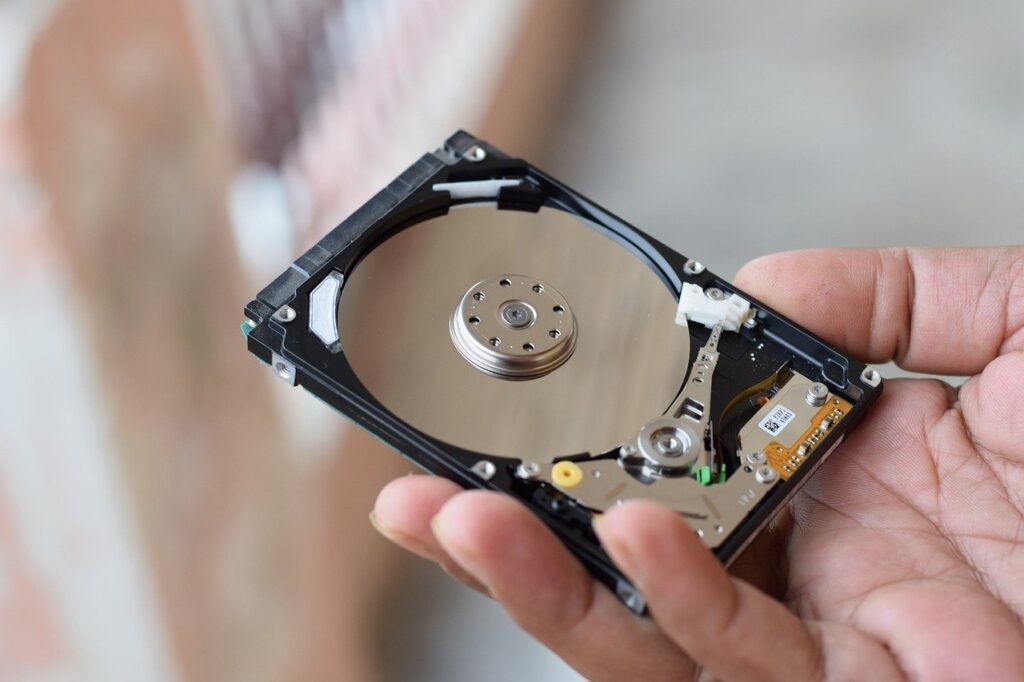In this guide, we will explore the essential best practices for gun safety and storage. Whether you are a first-time gun owner or have been handling firearms for a while, it’s crucial to prioritize the safety of yourself and those around you. By following these guidelines, you can ensure responsible gun ownership and create a secure environment for everyone. From safe handling techniques to proper storage methods, this article will provide you with valuable insights and tips to enhance your knowledge and confidence in firearms safety. Remember, being informed and knowledgeable is the key to preventing accidents and promoting a culture of responsible gun ownership.

This image is property of pixabay.com.
Safe Gun Handling
When it comes to firearms, safety should always be your top priority. The first and most important rule of safe gun handling is to always keep the gun pointed in a safe direction. Whether you are at the shooting range or in your own home, make sure the muzzle is pointed away from any people or objects that you do not want to shoot. By following this rule, you can minimize the risk of accidental discharge and prevent injuries.
Another crucial aspect of safe gun handling is to keep your finger off the trigger until you are ready to shoot. Many accidental discharges occur because people have their fingers on the trigger before they are actually prepared to fire. Always keep your finger outside the trigger guard until you have made the decision to shoot. This simple rule can make a significant difference in preventing accidental injuries.
When you are not actively using your firearms, it is important to unload them. This applies to both handguns and long guns. By unloading your guns when not in use, you eliminate the risk of accidental discharge and ensure that they are safe to handle. Remember to remove any ammunition from the chamber or magazine before storing the gun away.
Knowing your target and what’s beyond it is another critical aspect of safe gun handling. Before firing your gun, be sure to identify your target and what lies beyond it. Bullets have the potential to travel through barriers and can pose a danger to unintended targets. By being aware of what is behind your target, you can take measures to ensure the safety of others.
Proper Storage
Properly storing your firearms is essential for both safety and security. Investing in a quality gun safe is highly recommended. A gun safe provides a secure and locked space for your firearms, preventing unauthorized access. Look for a safe that meets your specific needs, taking into consideration factors such as size, fire resistance, and additional features like biometric access.
It is crucial to store firearms unloaded and locked, even when they are inside a gun safe. This eliminates the possibility of someone accessing a loaded gun and accidentally causing harm. Additionally, storing firearms in a locked state can also help prevent theft or unauthorized use.
For extra security, consider using additional locks or cables in combination with your gun safe. These can provide an extra barrier against unauthorized access and make it even more difficult for someone to remove your firearms from your premises without your knowledge.
When storing your firearms, it is important to keep ammunition separate from the guns. By storing ammunition in a separate location, you introduce an additional layer of safety. In the event that someone gains access to your firearms, they will not have immediate access to ammunition, preventing potential accidents or intentional harm.

This image is property of pixabay.com.
Gun Locks and Safes
In addition to a gun safe, consider purchasing a trigger lock for each of your firearms. A trigger lock, also known as a cable lock, is a device that restricts the movement of the firearm’s trigger, rendering it inoperable. This can be an effective way to prevent accidental discharges, especially if you have children in your home or if you frequently have visitors.
Another option to explore is the use of biometric gun safes. These safes use fingerprint recognition technology to provide quick and secure access to your firearms. Biometric gun safes are a convenient choice for those who want easy and reliable access to their firearms while still ensuring they remain secure from unauthorized users.
Cable locks can also be useful for added security. These locks can be threaded through the action or barrel of a firearm, effectively rendering it inoperable. Using cable locks in combination with other storage measures provides an extra level of theft prevention and safety.
Safe Ammunition Handling
Proper ammunition handling is just as important as safe gun handling. When it comes to storing ammunition, it is crucial to keep it in a cool and dry place. Extreme temperatures and high humidity can damage ammunition, potentially leading to misfires or other malfunctions. Ensure that your ammunition is stored in a location that protects it from moisture and excessive heat.
It is important to periodically check your ammunition for any signs of damage. Look for dented, corroded, or discolored cartridges, as these can indicate a problem with the ammunition. If you come across any damaged or suspect rounds, it is best to dispose of them properly. Contact your local law enforcement or consult with a gun shop to learn the proper procedures for disposing of ammunition.

This image is property of pixabay.com.
Educate Yourself and Others
Education is a critical component of gun safety. It is essential to learn and follow local, state, and federal laws regarding firearms. Stay up-to-date with any changes or updates to gun laws in your area to ensure you are in compliance. Ignorance of the law is not an excuse, and being aware of your responsibilities as a gun owner is paramount.
Taking a gun safety course is highly recommended for both new and experienced firearms owners. These courses cover a wide range of topics such as safe handling, storage, and operation of firearms. They provide valuable knowledge and practical skills that can enhance safety and improve your overall competence with firearms.
Teaching children about gun safety is incredibly important. It is crucial to instill in them the understanding that firearms are not toys and should never be handled without adult supervision. Teach them to treat guns with respect and to immediately inform an adult if they come across a gun, whether it is at home or elsewhere. By educating children about gun safety, we can help prevent accidents and tragedies.
Transporting Firearms
Transporting firearms requires careful consideration of the laws and regulations specific to your area. It is essential to be familiar with the transportation laws in your jurisdiction. Some areas may require specific permits or documentation when transporting firearms.
When transporting firearms, always ensure they are unloaded and in a locked container. This can be a hard-sided case or a dedicated gun transportation device. By securing your firearms in a locked container, you help prevent unauthorized access and accidents. If you are transporting firearms in a vehicle, it is important to keep them out of sight to deter potential theft.
Preventing Accidental Discharge
Preventing accidental discharge is a core aspect of gun safety. Whenever your firearm is not in use, ensure that it is in safe mode. This means engaging the safety mechanism, if available, and making sure the gun is not capable of firing. By preventing accidental discharges, you reduce the risk of injuries to yourself and others.
Regularly inspect your firearms for any signs of mechanical issues. Check for any loose or worn-out parts, as well as any abnormalities in the functioning of the firearm. If you notice any problems, have them addressed by a qualified gunsmith before using the firearm again. By maintaining your firearms in good working condition, you minimize the risk of malfunctions that could lead to accidental discharges.
Avoid alcohol or drug use when handling firearms. These substances impair your judgment, coordination, and reaction times, greatly increasing the chances of accidents. When you handle firearms, make sure you are in a clear state of mind and free from the influence of any substances that may impair your abilities.
Proper Disposal of Firearms
There may come a time when you need to dispose of a firearm. Whether it is due to personal reasons or no longer having a use for a particular firearm, it is essential to follow the applicable legal procedures for firearm disposal. Laws vary depending on your jurisdiction, so it is important to consult with your local law enforcement or a gun shop to learn the correct procedures.
One option for disposal is to donate unwanted firearms to law enforcement agencies. Many police departments or sheriff’s offices have gun buyback programs or accept donations of firearms. By donating your firearms to law enforcement, you can ensure that they are being used appropriately and are kept out of the wrong hands.
Safety Considerations for Home Defense
If you own firearms for home defense purposes, it is crucial to have a well-thought-out plan. Understand the layout of your home and identify potential safe areas in the event of an intruder. Develop an emergency plan with all family members, including escape routes and communication methods.
Maintaining situational awareness is key for home defense. Be aware of your surroundings and be prepared to react quickly and appropriately if a threat arises. Practice scenarios and drills with your family to ensure everyone is familiar with emergency procedures. By being prepared and educated, you can effectively protect yourself and your loved ones.
Maintenance and Cleaning
Regular maintenance and cleaning are essential for keeping firearms in safe and functional condition. It is recommended to regularly clean and lubricate your firearms to remove any debris and ensure proper functioning. Follow the manufacturer’s instructions for cleaning and maintenance, as different firearms may have specific requirements.
After cleaning your firearms, store them properly. Place them back in their designated storage area, whether it is a gun safe or another secure location. Storing your firearms correctly after cleaning helps to maintain their condition and ensures that they are ready for future use.
By following these best practices for gun safety and storage, you can reduce the risk of accidents, theft, and unauthorized access. Prioritize safety, educate yourself and others, and always comply with applicable laws and regulations. Responsible gun ownership is a shared responsibility, and by adhering to these guidelines, you can contribute to a safer environment for everyone.
